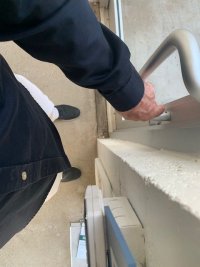As it was explained to me many years ago, the practical reason is so that a person who is frail or does not have much "leverage" in their arms and fingers can stand with their body centered in front of the latch handle to both turn the latch and push open the door at the same time, with minimal exertion.
On a door with no latch, all you need to do is lean into the door at any point on the door panel.
On a door with (for example) a lever hardware latch, but no closer, you can push the lever down in one vector without also having to push forward at the same time in a second force vector, so working from just one side of your body takes little effort. If, for example, you are opening a door with a right side strike and you are missing your right arm, you can reach across with your left had and open the lever and the door will easily stay in an "ajar" position while you pivot you body back to push open the panel.
You can imagine how it might be harder to do this if the door kept wanting to close right while you were trying to also unlatch it and reposition your body. The extra 12" helps overcome this.
Back in the day, before ADA shakedown lawsuits took away the interest in finding reasonable accommodation / equivalent facilitation, building officials used to regularly grant a panic bar as being functionally equivalent to having 12" on the push side. That way a frail person could simply push anywhere on the door and get it to unlatch and open in a single forward-pushing motion, no leveraging of dexterity required.


